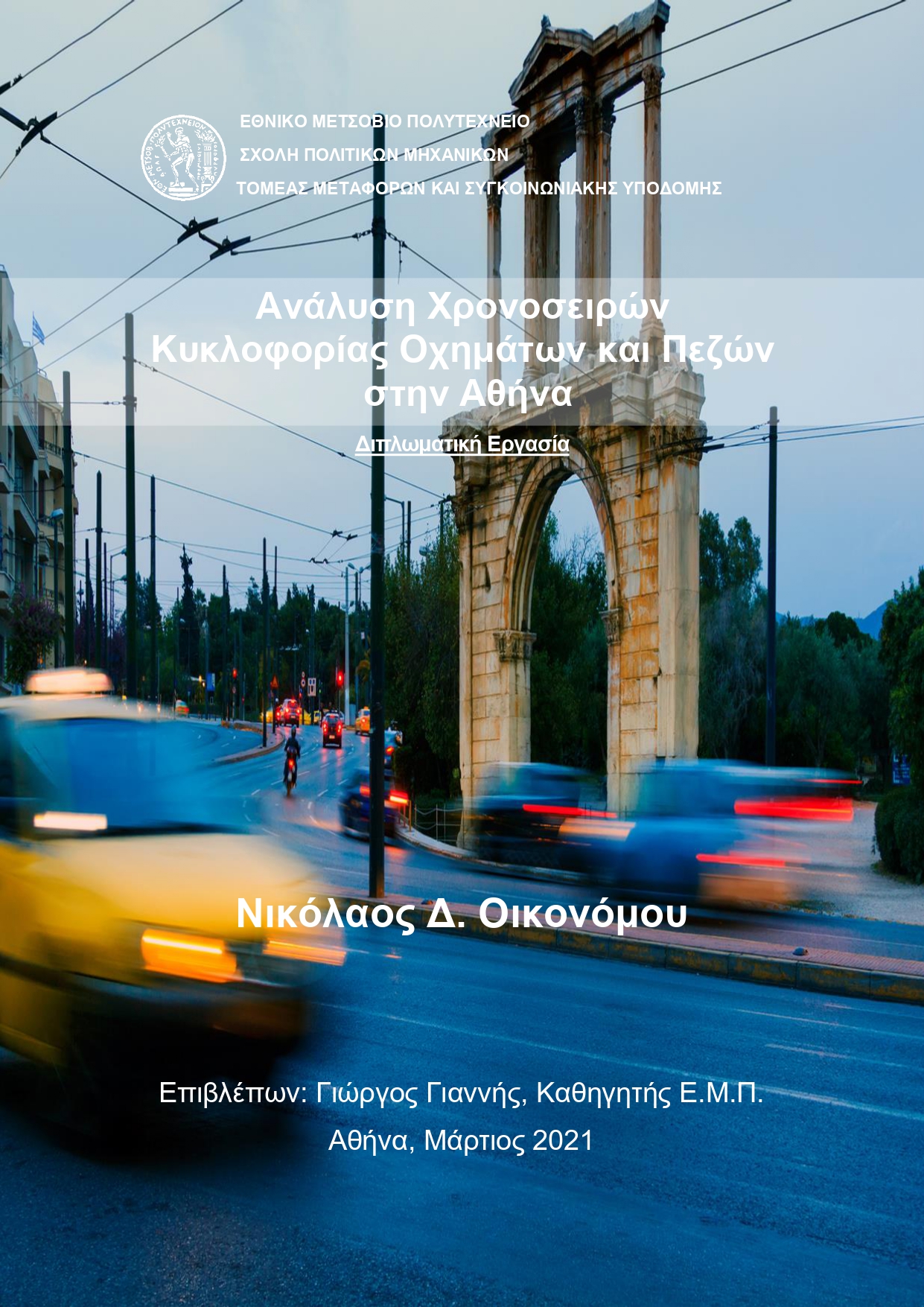
The objective of this Diploma Thesis is the time series analysis of drivers and pedestrians traffic in Athens, during the trial operation period of the Athens Great Walk (June – October 2020). A sub-objective is to evaluate the impact on traffic of the Athens Great Walk pilot operation. For that purpose, time series data on modal split in Athens central area were collected through field counts conducted by NTUA, as well as time series traffic data in Athens Great Area extracted by the respective Apple online application. Through time series analysis of the mobility data collected, forecasting models (ARIMA) were developed, which proved to be statistically significant only for drivers and pedestrians mobility in Athens Great Area. The ARIMA models developed, revealed that from summer onwards the forecasted mobility evolution of drivers and pedestrians in Athens Great Area is lower than the observed one, which may be due to summer holidays and high temperatures during summer months in which the prediction was based. Considering the modal split on the examined roads in the center of Athens, it is observed a reduction in the use of passenger vehicles with a simultaneous increase in the use of taxis, which may be due to the adaptation of drivers to the new traffic conditions of the Panepistimiou street brought about by the Athens Great Walk pilot operation.
| ID | ad109 |
| Presentation | |
| Full Text | |
| Tags | machine learning, multi-modal transport, statistical modelling, traffic management, urban mobility |













